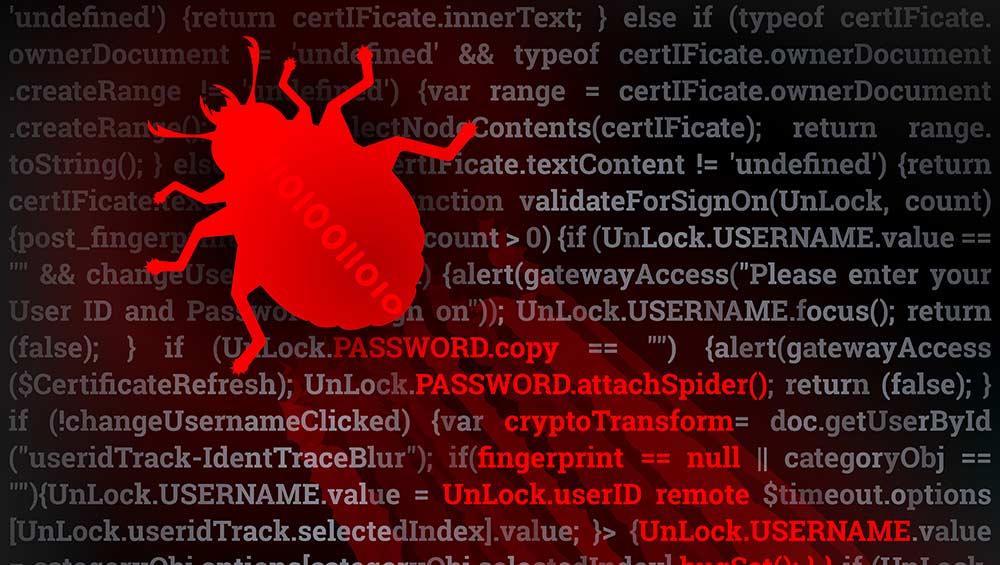Trickbot now uses Microsoft Excel to steal passwords and web browser data
The banking trojan has pivoted from stealing victims’ financial details to credentials and web history


The Trickbot malware, which has conventionally sought banking details, is now using a Microsoft Excel file ridden with malicious code to steal user credentials from web browsers.
Its new module dubbed pwgrab32 is attempting to steal autofill data, web history as well as usernames and passwords from browsers and several applications through a malicious Microsoft Excel file, researchers claim.
The attackers are spreading a file (named Sep_report.xls) via malicious code written in the Macro VBS programming language, executed when victims open the document. When Sep_report is opened users are then prompted to "enable content" on the embedded Macro, which activates and runs the malicious script.
After the malware downloads and runs the pwgrab32 module, it launches three threads to grab credentials from Internet Explorer, Firefox and Chrome, said a Fortinet security researcher Xiaopeng Zhang. In Zhang's version, a fourth thread for Edge was present but disabled.
Pwgrab32 then executes functions to steal autofill information from the web browser, credit card information, as well as credentials such as email address, country, company, street address, full name and phone number.
It steals stored usernames and passwords, internet cookies, browsing history, and HTTP posts. It is not capable of stealing passwords from third-party password manager applications such as Dashlane or LastPass, however, according to Trend Micro's security researchers Noel Anthony Llimos and Carl Maverick Pascual, who also analysed Trickbot.
Once the malware has completed this process, it moves on to harvest passwords from mail client Outlook, as well as File Transfer Protocol apps FileZilla and WinSCP.
Get the ITPro daily newsletter
Sign up today and you will receive a free copy of our Future Focus 2025 report - the leading guidance on AI, cybersecurity and other IT challenges as per 700+ senior executives
The malware's new functionality came to researchers' attention last month, with Fortinet's Zhang capturing his sample on 19 October.
"Malware authors continue to cash in on Trickbot's modular structure - its ability to continually update itself by downloading new modules from a C&C server and change its configuration make for a malware that's ripe for updating," said Trend Micro's Noel Anthony Llimos and Carl Maverick Pascual.
"Users and enterprises can benefit from protection that use a multi-layered approach to mitigate the risks brought by threats like banking trojans."
Conventionally targeting victims' financial details, Trickbot has been alive and active since 2016 and is believed to be the reincarnation of the 'Dyre' attacks earlier this decade.
The modular nature of the malware means the attackers behind it have been able to expand into several areas beyond its original narrow focus as a banking trojan.
Other notable modules it has developed in the last couple of years include systeminfo32, which gathers data on a victim's OS, CPU and memory information, and networkDll32, an encrypted module which scans a network and steals network information.
Trickbot has even pivoted to Bitcoin wallet theft in recent months, with a Trickbot variant spotted last year that targets the Coinbase cryptocurrency exchange platform to steal user credentials, and funds.

Keumars Afifi-Sabet is a writer and editor that specialises in public sector, cyber security, and cloud computing. He first joined ITPro as a staff writer in April 2018 and eventually became its Features Editor. Although a regular contributor to other tech sites in the past, these days you will find Keumars on LiveScience, where he runs its Technology section.
-
 Bigger salaries, more burnout: Is the CISO role in crisis?
Bigger salaries, more burnout: Is the CISO role in crisis?In-depth CISOs are more stressed than ever before – but why is this and what can be done?
By Kate O'Flaherty Published
-
 Cheap cyber crime kits can be bought on the dark web for less than $25
Cheap cyber crime kits can be bought on the dark web for less than $25News Research from NordVPN shows phishing kits are now widely available on the dark web and via messaging apps like Telegram, and are often selling for less than $25.
By Emma Woollacott Published
-
 CronRat Magecart malware uses 31st February date to remain undetected
CronRat Magecart malware uses 31st February date to remain undetectedNews The malware allows for server-side payment skimming that bypasses browser security
By Rene Millman Published
-
 Mekotio trojan continues to spread despite its operators’ arrests
Mekotio trojan continues to spread despite its operators’ arrestsNews Hackers have used it in 100 more attacks since arrests
By Rene Millman Published
-
 “Trojan Source” hides flaws in source code from humans
“Trojan Source” hides flaws in source code from humansNews Organizations urged to take action to combat the new threat that could result in SolarWinds-style attacks
By Rene Millman Published
-
 What is Emotet?
What is Emotet?In-depth A deep dive into one of the most infamous and prolific strains of malware
By Praharsha Anand Last updated
-
 Fake AnyDesk Google ads deliver malware
Fake AnyDesk Google ads deliver malwareNews Malware pushed through Google search results
By Rene Millman Published
-
 Hackers use open source Microsoft dev platform to deliver trojans
Hackers use open source Microsoft dev platform to deliver trojansNews Microsoft's Build Engine is being used to deploy Remcos password-stealing malware
By Rene Millman Published
-
 Android users told to be on high alert after Cerberus banking Trojan leaks to the dark web
Android users told to be on high alert after Cerberus banking Trojan leaks to the dark webNews The source code for the authenticator-breaking malware is available for free on underground forums
By Sabina Weston Published
-
 Qbot malware surges into the top-ten most common business threats
Qbot malware surges into the top-ten most common business threatsNews An evolved form of the banking Trojan was distributed by number one-ranking Emotet in a campaign that hit 5% of businesses globally
By Keumars Afifi-Sabet Published